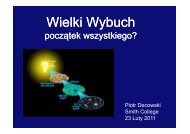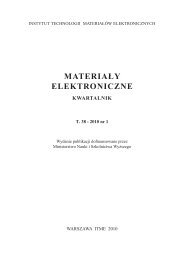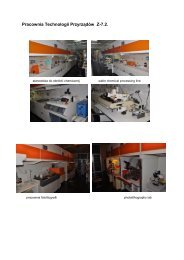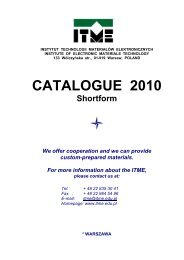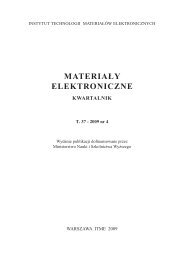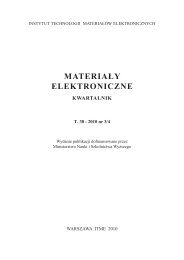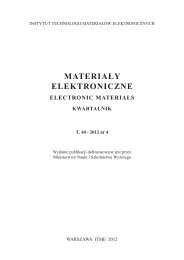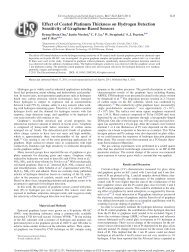Nr 1 - ITME
Nr 1 - ITME
Nr 1 - ITME
Create successful ePaper yourself
Turn your PDF publications into a flip-book with our unique Google optimized e-Paper software.
J. Borecki, J. Felba, A. Wymysłowski<br />
Table 1. Parameters of experiment of 150 µm microvia forming (parameters of second step).<br />
Tabela 1. Parametry eksperymentu drążenia mikrootworu o średnicy 150 µm (parametry<br />
drugiego kroku).<br />
Parameter Factor Unit Level 1 Level 2 Level 3<br />
First pulse enabled A — ON OFF —<br />
Repetitions rate B [kHz] 10.0 12.0 16.0<br />
Velocity C [mm/ 60.0 70.0 78.5<br />
Effective spot size D [µm] 45.0 55.0 65.0<br />
Inner diameter E [µm] 25.0 35.0 45.0<br />
Revolutions F - 2 3 4<br />
Power (average) G [W] 0.3 0.5 0.8<br />
Z offset<br />
H [mm] 1.0 1.5 2.0<br />
Fig. 1. Reason-result graph for process of blind microvia forming by spiral method.<br />
Rys. 1. Wykres przyczynowo-skutkowy dla procesu formowania mikrootworów nieprzelotowych<br />
metodą spiralną.<br />
To realize the experiment of microvia forming by standard way (changing level<br />
of one parameter in every test) it gives over four thousand tests. To reduce necessary<br />
tests the Taguchi method of experiment design was used. This method is based on<br />
statistical analysis in which the orthogonal arrays are used [1]. Taking into account<br />
number of factors and their corresponding levels the orthogonal array L18 type was<br />
selected (Tab. 2).<br />
Each test was made three times in order to eliminate possible regular errors<br />
connected with an operator.<br />
The quality of microvias formed in each test was estimated by microscope<br />
observations of cross-sections. The selected photos of cross-sections are presented<br />
in Fig. 2.<br />
61




